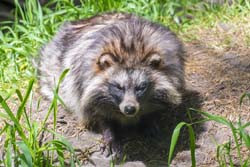Combating the spread of invasive species
The raccoon dog is not related to raccoons – it is a type of canine about the size of a fox, but with shorter legs and tail. Its natural range is in East Asia, but was introduced into the European parts of the former Soviet Union where it was farmed for its fur. From here it has spread through parts of northern and eastern Europe. Earlier research has provided some knowledge of the ecological and environmental conditions to which N. procyonoides has adapted. However, scientists have until now lacked vital understanding of the genetic mechanisms that make this dramatic expansion possible. The EU-funded EUROINVADERS (Understanding the evolutionary mechanisms of invasion success: Selective footprints in the genome of an Euro-invader – the raccoon dog (Nyctereutes procyonoides)) project addressed this problem, conducting a genetic study using next-generation sequencing technology. In the first phase of the project, a 'library' was generated of all the genes expressed in each of three Asian and three European raccoon dogs. This allowed population-specific patterns to be studied in order to understand the genes that are expressed in different ways within the varying environments raccoon dogs have adapted to. The second phase aimed to achieve a better understanding of the diversification process, which occurred over a short period of time in different populations. Investigating different chromosomal arrangements at a nucleotide level enabled identification of the genomic regions involved in speciation and diversification processes. Raccoon dogs belong to the family Canidae, which also contains the dog. The EUROINVADERS project used its expertise to better understand the origin and timing of dog domestication. This enabled use of the dog as a reference for understanding how genetic variation can occur in species. Due to its rapid expansion through Europe and identification as a problem species, the raccoon dog was used as a model organism to investigate the evolutionary mechanisms behind invasion success. The results from EUROINVADERS will facilitate the development of effective management plans for halting the spread of N. procyonoides and other invasive species. Project outcomes therefore should help conserve native flora and fauna.







